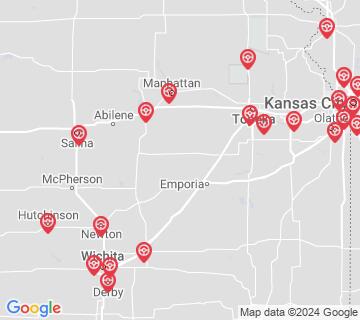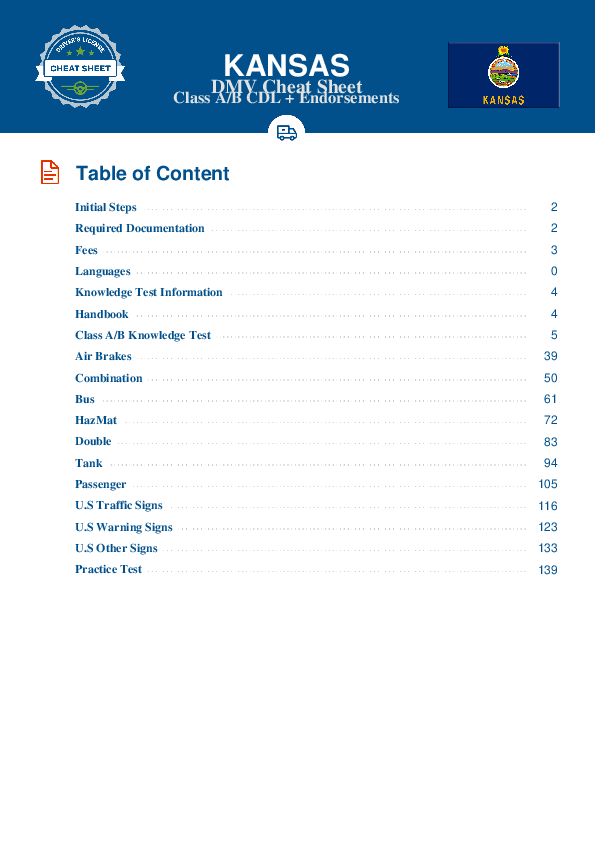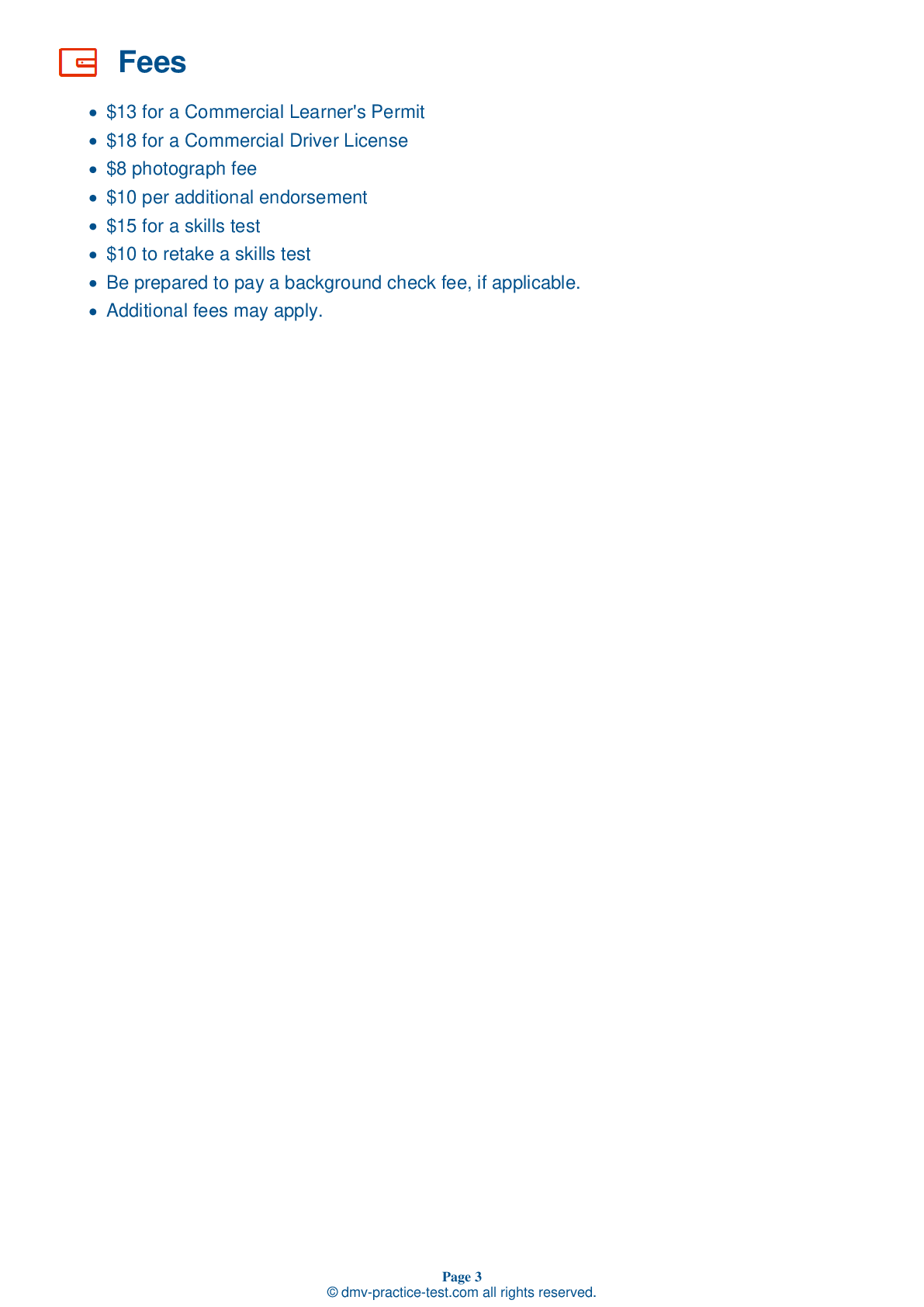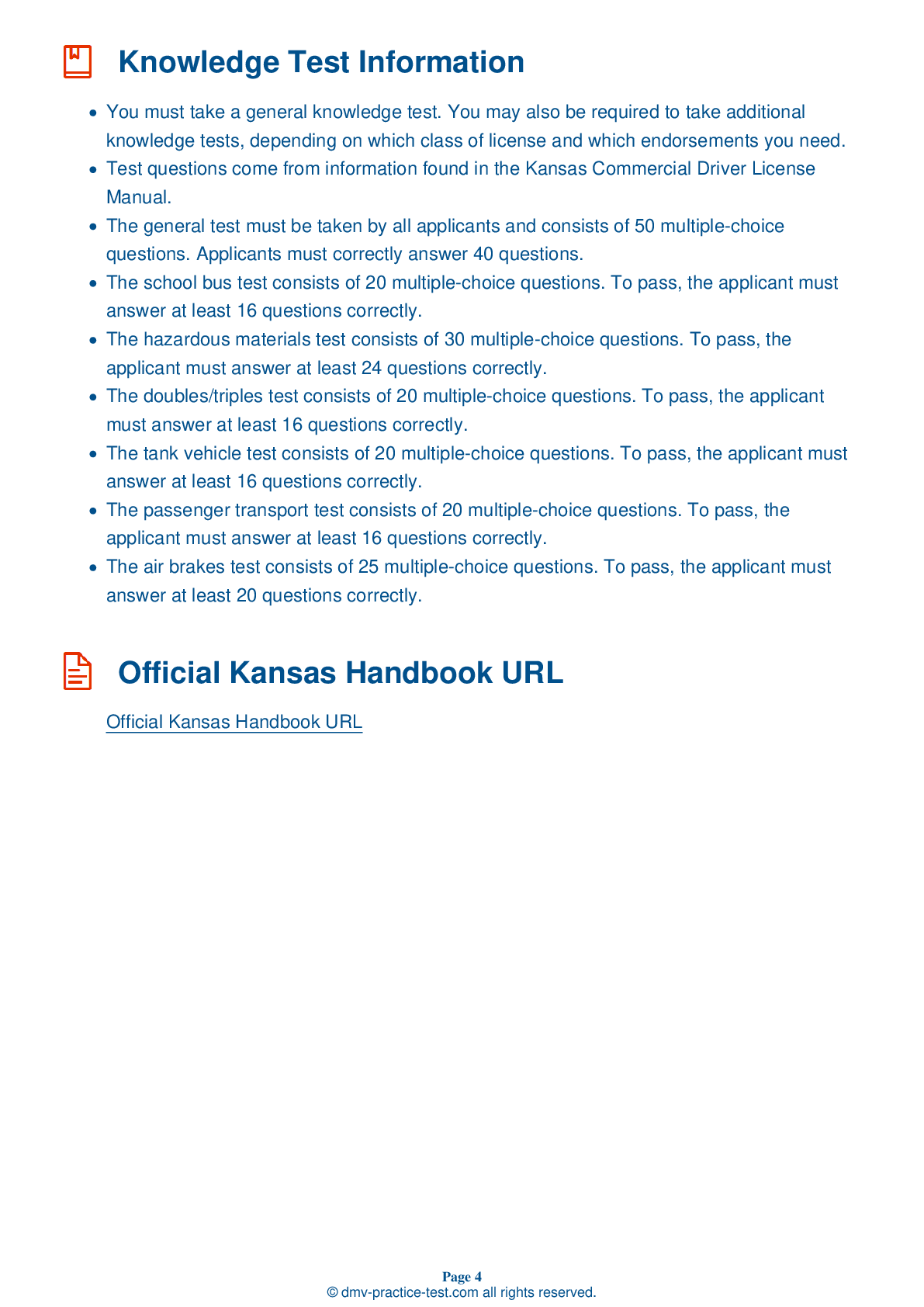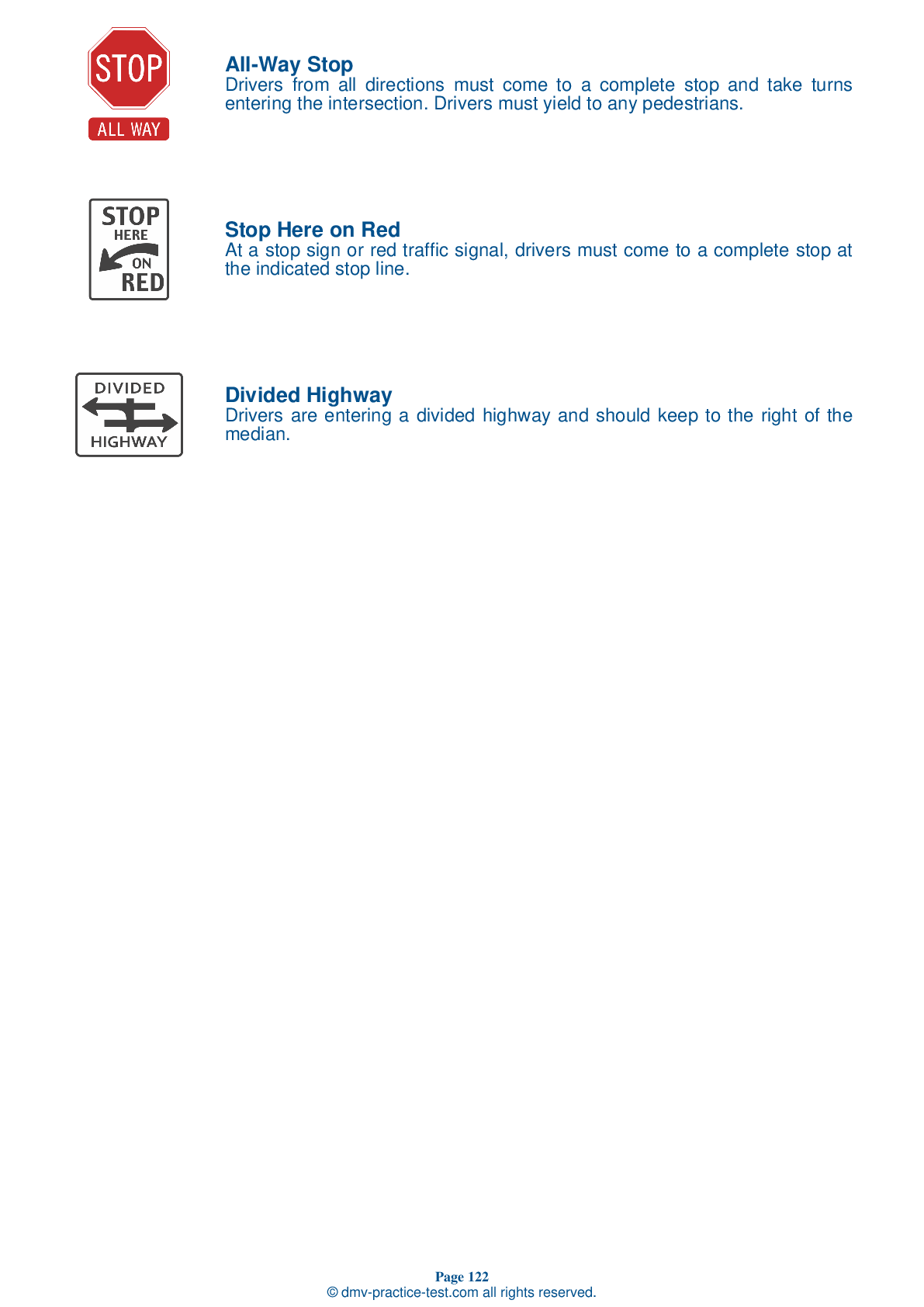HazMat #1
Hazmat Test | Kansas 2025 #1 Page 3 of 5
On our website, we provide FREE practice - CDL hazmat test online! The official exam test consists of several obligatory parts, with all of them checking your knowledge of different blocks of road rules. If you need to obtain a KS CDL hazmat endorsement in 2025, practice as much as possible. Free sample tests published on our website will help you check and improve your knowledge and boost your grades. Please bear in mind that Kansas requirements for issuing a hazmat endorsement for CDL may vary from those established in other states.
30
24
20
13 . When checking tire condition during the vehicle inspection, you should:
Ensure that the tires have even wear.
When examining your tires during the vehicle inspection test, you should ensure that treads are evenly worn.
14 . After driving over a bridge during the driving skills test, you may be asked to recall.
If there was a crosswalk on the bridge.
If you drive over a bridge during the on-road driving skills test, the examiner may ask you afterwards to recall the bridge's posted weight limit.
15 . Which of the following is not a backing maneuver that you will be asked to perform during the basic control skills test?
Blind offset
Backing maneuvers that may be included in the basic vehicle control skills test include straight line backing, offset back/right, offset back/left, driver side parallel parking, conventional parallel parking, and alley docking.
16 . If a product requires a "Poison Inhalation Hazard" placard, the placard must be used when transporting:
The product in a leaking container.
For applicable materials, the "Poison Inhalation Hazard" placard and the appropriate hazard class placard must always be displayed, even for small amounts of the materials.
17 . When checking the power steering fluid during a vehicle inspection, you will need to do each of the following, except:
Ensure that the power steering level is above the refill mark.
When checking the power steering fluid during the vehicle inspection test, you must be able to indicate where the power steering fluid dipstick is located and show that there is an adequate amount of power steering fluid in the engine compartment. The fluid level must be above the refill mark.
18 . Shipping papers should be:
Laminated.
